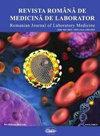新一代测序实验室聚合酶链反应污染处理的方案和考虑事项
IF 0.5
4区 医学
Q4 MEDICINE, RESEARCH & EXPERIMENTAL
引用次数: 1
摘要
摘要目的:分子诊断实验室聚合酶链反应(PCR)样品的污染可造成严重后果。内部质量控制工作往往不足,特别是在临床下一代测序(NGS)实验室。方法:回顾性调查某临床实验室PCR污染的发生率及其净化过程。我们采取了一系列去污措施。采用塔克曼荧光定量法测定污染DNA的存在。采用SYBR-Green PCR方法评价含氯消毒剂对NGS文库制备的影响。结果:通过8周的一系列消除措施,验证了去污工艺的可靠性。几乎没有检测到污染。Illumina NGS实验室禁止使用含氯消毒剂,因为它可能导致文库制备失败。结论:我们的预防和净化策略可以有效地消除PCR扩增子。氯消毒剂不应在Illumina NGS实验室中使用。本文章由计算机程序翻译,如有差异,请以英文原文为准。
Protocol and Matters for Consideration for the Treatment of Polymerase Chain Reaction Contamination in Next-Generation Sequencing Laboratories
Abstract Objective: The contamination of polymerase chain reaction (PCR) samples in molecular diagnostic laboratories can cause serious consequences. Internal quality control efforts are often inadequate, especially in clinical next-generation sequencing (NGS) laboratories. Methods: In this study, we retrospectively investigated an incidence of PCR contamination and its decontamination process in a clinical laboratory. We performed a series of measures for decontamination. Taqman fluorescence quantification was carried out to determine the presence of contaminating DNA. SYBR-Green PCR was conducted to evaluate the effect of chlorine disinfectant on NGS library preparation. Results: Through a series of elimination measures undertaken over 8 weeks, the decontamination process was verified as reliable. Almost no contamination was detected. Chlorine disinfectant should be forbidden in Illumina NGS laboratories because it may cause the failure of library preparation. Conclusion: Our prevention and decontamination strategies could effectively eliminate PCR amplicons. Chlorine disinfectants should not be used in Illumina NGS laboratories.
求助全文
通过发布文献求助,成功后即可免费获取论文全文。
去求助
来源期刊

Revista Romana De Medicina De Laborator
MEDICINE, RESEARCH & EXPERIMENTAL-
CiteScore
0.31
自引率
20.00%
发文量
43
审稿时长
>12 weeks
期刊介绍:
The aim of the journal is to publish new information that would lead to a better understanding of biological mechanisms of production of human diseases, their prevention and diagnosis as early as possible and to monitor therapy and the development of the health of patients
 求助内容:
求助内容: 应助结果提醒方式:
应助结果提醒方式:


